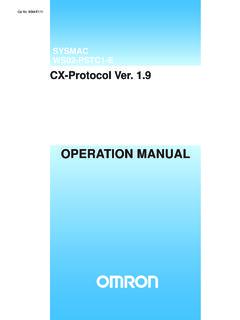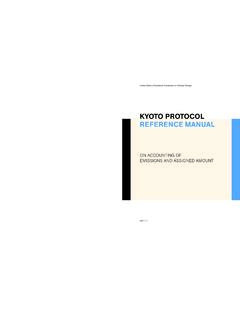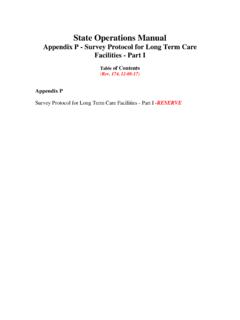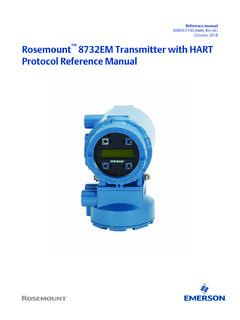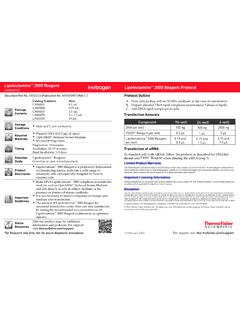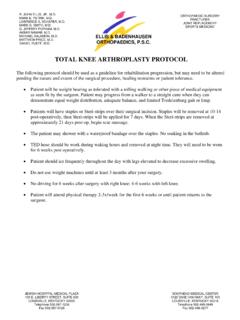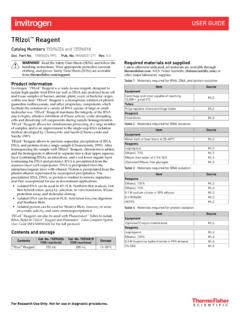Transcription of The National Healthcare Safety Network (NHSN) Manual
1 Last updated in November 2017 The National Healthcare Safety Network (NHSN) Manual Healthcare PERSONNEL Safety COMPONENT protocol Healthcare Personnel Vaccination Module: Influenza Vaccination Summary Division of Healthcare Quality Promotion National Center for Emerging and Zoonotic Infectious Diseases Atlanta, GA, USALast updated in November 2017 Table of Contents Chapter Title 1 Introduction to the Healthcare Personnel Safety Component 2 Healthcare Personnel Safety Reporting Plan 3 Healthcare Personnel Vaccination Module: Influenza Vaccination Summary 4 Forms and Tables of Instructions 5 Key Terms Appendix A Influenza Vaccination Summary: List of Contracted Healthcare Personnel Last updated in November 2017 1-1 1.
2 Introduction to Healthcare Personnel Safety Component In recent years, occupational hazards faced by Healthcare personnel (HCP) in the United States have received increasing attention. Although recommendations, guidelines, and regulations to minimize HCP exposure to such hazards have been developed, additional information is needed to improve HCP Safety . In particular, existing surveillance systems are often inadequate to describe the scope and magnitude of occupational exposures to infectious agents and non-infectious occupational hazards that HCP experience, the outcomes of these exposures and injuries, and the impact of preventive measures.
3 The lack of ongoing surveillance of occupational exposures, injuries, and infections in a National Network of Healthcare facilities using standardized methodology also compromises the ability of the Centers for Disease Control and Prevention (CDC) and other public health agencies to identify emerging problems, to monitor trends, and to evaluate preventive measures. The Healthcare Personnel Safety (HPS) Component of the National Healthcare Safety Network (NHSN) was launched in 2009. The component consists of two modules: 1) Healthcare Personnel Exposure; and (2) Healthcare Personnel Vaccination.
4 The exposure module includes: Blood/Body Fluid Exposure Only; Blood/Body Fluid Exposure with Exposure Management; and Influenza Exposure Management. The Healthcare Personnel Vaccination Module, modified in 2012, includes: Influenza Vaccination Summary. Data collected in this surveillance system will assist Healthcare facilities, HCP organizations, and public health agencies to monitor and report trends in blood/body fluid exposures, to assess the impact of preventive measures, to characterize antiviral medication use for exposures to influenza, and to monitor influenza vaccination percentages among HCP.
5 In addition, this surveillance component will allow CDC to monitor National trends, to identify newly emerging hazards for HCP, to assess the risk of occupational infection, and to evaluate measures, including engineering controls, work practices, protective equipment, and post-exposure prophylaxis designed to prevent occupationally-acquired infections. Hospitals and other Healthcare facilities participating in this system will benefit by receiving technical support and standardized methodologies, including a Web-based application, for conducting surveillance activities on occupational health.
6 The NHSN reporting application will enable participating facilities to analyze their own data and compare these data with a National database. Last updated in November 2017 2-1 2. Healthcare Personnel Safety Reporting Plan The Healthcare Personnel Safety Monthly Reporting Plan (CDC ) is used by NHSN facilities to inform CDC which Healthcare personnel Safety modules are used during a given month. This allows CDC to select the data that should be included in the aggregate data pool for analysis. Each participating facility is to enter a monthly plan to indicate the modules to be used, if any, and the exposures and/or vaccinations that will be monitored.
7 A plan must be completed for every month that data are entered into NHSN, although a facility may choose No NHSN Healthcare Personnel Safety Modules Followed this Month as an option. When creating a plan for the influenza vaccination summary, all months will be included in the plan regardless of whether data are entered each month. Once the influenza vaccination summary is selected on the reporting plan, it is automatically updated with this information for the entire NHSN-defined influenza season (July 1 to June 30). The Instructions for Completion of the Healthcare Personnel Safety Monthly Reporting Plan Form includes brief instructions for collection and entry of each data element on the form.
8 Last updated in November 2017 3-1 3. Healthcare Personnel Vaccination Module: Influenza Vaccination Summary Introduction The Advisory Committee on Immunization Practices (ACIP) recommends that all persons six months of age and older, including HCP and persons in training for Healthcare professions, should be vaccinated annually against influenza.[1,2] Persons who are infected with influenza virus, including those who are pre-symptomatic, can transmit the virus to coworkers and patients, including those at higher risk for complications from influenza. Vaccination of working age adults, including HCP, has been associated with reduced risk of influenza illness, and reduced work absenteeism, antibiotic use, and medical visits.
9 [3,4] In addition, HCP vaccination has been found to reduce deaths among nursing home patients [5,6] and elderly hospitalized patients.[6] Although annual vaccination is recommended for all HCP and is a high priority for reducing morbidity associated with influenza in Healthcare settings, National survey data have demonstrated that vaccination coverage levels are only approximately 60% [7]. This is well below the Healthy People 2020 goal of 90% for HCP influenza vaccination [8]. Healthcare facilities should provide influenza vaccine to HCP using approaches that have demonstrated effectiveness in increasing vaccination coverage.
10 Healthcare administrators should consider the level of vaccination coverage among HCP to be one measure of a patient Safety quality program and consider obtaining signed declinations from personnel who decline influenza vaccination for reasons other than medical contraindications.[9-12] Influenza vaccination rates (including ward-, unit-, and specialty-specific coverage rates) among HCP within facilities should be regularly measured and reported to facility administrators and staff.[12] Healthcare facilities should offer influenza vaccinations to all HCP, including night, weekend, and temporary staff.










